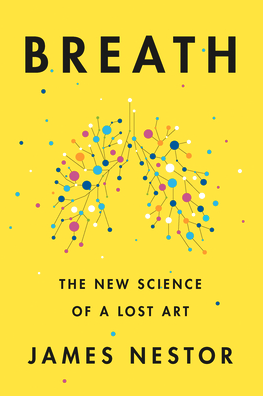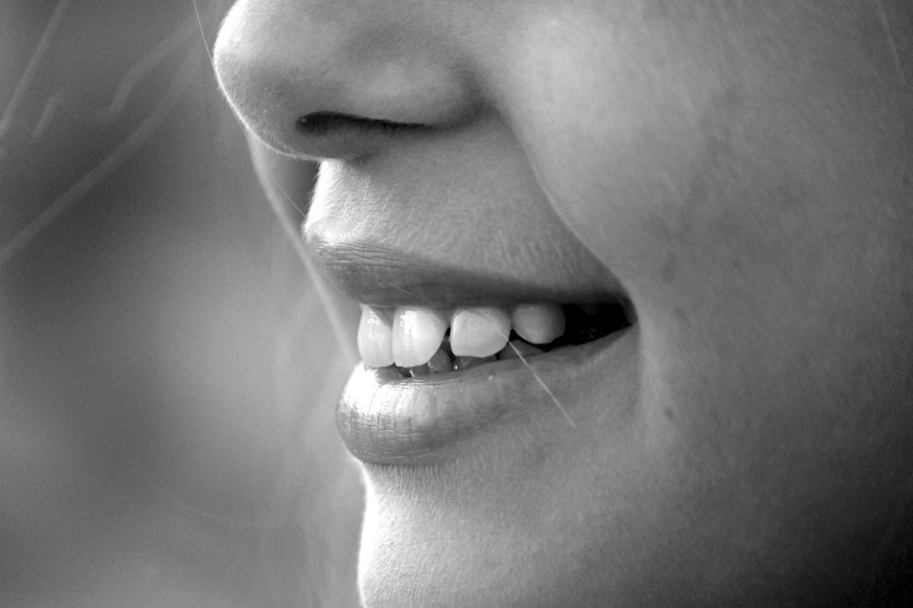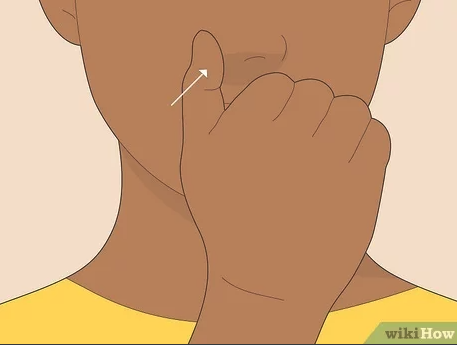I’m a “thin-nosed” person. Which means, although I’m incredibly sculpted, it makes it super difficult to exercise and work out. (Place laughter emoji here!) I always envied those people with the wide, bulbous noses – especially during those rough winter times. This is the time of year when my nose usually gets sinus issues all stuffed up.

My nose just can’t handle jogging through the cold on a winter morning, either. I’m forced to mouth breathe. So, when I read somewhere that nasal breathing has huge benefits, I thought “Oh no. I’m a thin-nosed person. Guess nasal breathing will work only for the big nose people.”
Not to mention I’ve been in those yoga classes, where they have you breathe in one nostril and breathe out the other. (This is to switch between sympathetic and parasympathetic modes. More on this in a bit.)
But I was never able to do that. Because, again, one nose would always be too stuffed up.
Breath
Enter this book into my life: “Breath: The new Science of a Lost Art” by James Nestor.

In this book he gives a lot of facts on the beauty of breathing. For instance, humans take 25,000 breaths per day. That’s 25 breaths per minute. Even the wind that goes in our nose – it’s shooting in there at about 5 or 6 miles an hour.
Nestor got into the subject of breathing because he had recurring pneumonia and bronchitis. It was because of these ailments that he was willing to put himself in some pretty uncomfortable situations to fix his breathing.
One situation, as part of the research for “Breath”, had him take part in a study that required him to completely plug his nose for 10 days – making him breathe entirely through his mouth.
“I went from snoring a couple minutes a night to, within three days, I was snoring for four hours a night,” he said about being forced to mouth-breathe. “I developed sleep apnea. My stress levels were off the charts. My nervous system was a mess. … I felt awful.”
He learned that it’s important to stop and listen to yourself and feel how breath is affecting you. He says taking slow and low breaths is how your human body wants to take in air. “It lowers the burden of the heart if we breathe properly and if we really engage the diaphragm.”
Nasal Breathing Benefits

The nose is more important than you think. It “treats” raw air and filters it from about 20 billion particles of foreign matter each day.
Inhaling through the nose triggers various hormones which in turn lowers blood pressure. Nasal breathing releases nitric oxide, which is an essential molecule for overall health. The nitric oxide is a vasodilator, which means it signals the blood vessels to relax, allowing them to expand.
It “treats” raw air and filters it from about 20 billion particles of foreign matter each day.
As the vessels expand, this allows oxygen, blood, and nutrients to flow through your body more freely. It is speculated that people with high blood pressure have less nitric oxide being absorbed into their bodies. Hence, circulation, immune function, mood, weight, and sexual function are all greatly influenced by this nitric oxide.
Nasal breathing can boost our nitric oxide sixfold.
How long has this information been around?
George Catlin, Explorer
George Catlin was an explorer in the 19th century who went up the Missouri to live with the Lakota Sioux tribes. It was here that he met up with the Mandan, a mysterious tribe whose members strangely seemed to never get sick. He said their hair was white, and that they were really tall.
He also noticed their teeth were perfect, like that of a “piano”. And they didn’t seem to have any chronic health problems. The Mandan said this was because of their breathing. They were nose breathers.
“The air which enters the lungs is as different from that which enters the nostrils as distilled water is different from the water in an ordinary cistern or a frog pond,” he wrote at the time.
And these stories are not isolated to the Mandan. Eastern cultures have been saying this for hundreds of years.
Right Nostril is Gas, Left Nostril is Brake

When you breathe through the right nostril, your blood pressure increases, your heart rate and circulation speeds up, your cortisol levels rise, and you heat up. This is because of the sympathetic “fight or flight” nervous system.
Breathing through this right nostril feeds more blood to the left side of the brain. It puts the body in a state of alertness. Plus, it feeds more blood to the prefrontal cortex, which is associated with logical decisions, language, and computing.
And that’s just the right nostril.
The left nostril is the brake. It’s connected to the parasympathetic system, which lowers blood pressure and reduces anxiety. Breathing through this nostril shifts the blood flow over to the right side of the brain. This right side is the land of creative thinking, emotions, and mental abstractions.
So it’s nice to have a balance between both modes. But what happens when there isn’t?
Improper Breathing
In 2015, the breathing patterns of a schizophrenic woman were studied by researchers at the University of California, in San Diego. They discovered she had a “significantly greater” habit of breathing through the left nostril. This dominance, they speculated, was likely overstimulating the right side of her brain, which was making her imaginative faculties run amok.
So as an experiment, they had her breathe through her right nose – the “logical nostril” – which was connected to the left side of her brain. And it worked. The hallucinations were reduced “more quickly”.
How can we take this knowledge and use it in our own lives?
Alternate Nose Breathing
Alternate nose breathing is not some pseudo science. It has many great effects – from lowering blood pressure, heart rate, respiratory rate to reducing stress. It creates improvements in neuro-cognitive, metabolic, and respiratory functions in people who are healthy.
It’s safe for most people. But if you feel any side effects, like shortness of breath, nausea, or dizziness, stop immediately. Also stop if it triggers any mental or physical symptoms.
An Exercise for Alternate Nose Breathing
Here’s how you do it. Find a place that is nice and quiet.
Focus on your breath. You should breathe easily throughout the exercise. It should be slow, smooth, and continuous.

Here’s how to do it:
- Sit in a comfortable position. Legs crossed.
- Put your left hand down on your left knee.
- Lift your right hand up to your nose.
- Exhale completely and then use your right thumb to close your right nostril.
- Inhale through your left nostril and then close the left nostril with your fingers. (Some say the ring finger.)
- Open the right nostril and exhale through this side.
- Inhale through the right nostril and then close this nostril.
- Open the left nostril and exhale through the left side. Inhale through the left nostril. Close.
- Exhale through the right nostril. Inhale through the right. Close.
- This is one “cycle”.
- Continue for up to about 5 minutes.
- Always complete the session with an exhale on the left side.
My Nose Trick
Well, as I began, I explained that throughout my life I have had a difficult time breathing through my nose – especially during exercise. This is because I am a “slim-nosed” person.
But recently I discovered how to fix this problem. It’s a piece of plastic that fits in the nose during exercise. I also use it for sleep. Apparently this little device can let you take in up to 35% more oxygen. One is for sports and one is for sleeping. Check it out, here’s a link:
